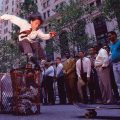If there’s one thing all skateboarders can all agree on, it’s that skateboarding is as much of an art form as it is a sport and that when it comes to landing skateboarding tricks, it’s not just about how hard the trick is but how it looks.
In fact, most skaters judge their own skating and pick their favorite skaters based on how their tricks look rather than if they win contests. It’s also why skaters of any level can enjoy filming their own skating, shredding the local skatepark or joining in on “who has the best style” debate.
However, for beginners even the very concept of developing a style will generally come well after learning basic skateboarding tricks and fundamentals. But those who get a head start on developing their own style will go on to lead in what skaters call, “style points!” Something that when at a skatepark where everyone can kickflip, will set you apart from the rest of the skaters.
That being said, there’s much more to learn about honing your skateboarding style, including proven tips soured from life long skaters.
So let’s get right into it.
In this article, you’ll become an expert on:
- Why Style is So Important In Skateboarding?
- The Main Factors Influencing Skate Style
- How Long Does it Take a Beginner to Hone their Skate Style?
- 8 Best Ways To Hone Your Skateboarding Style
GOSKATE invites you to check out our Glossary on Skateboarding Terminology to help get you up to speed on some of the terms in this article. We also invite you to contact GOSKATE for any questions you might have about our services to help you or your loved one hone their skateboarding style!
Why Style is So Important In Skateboarding?

The first step in developing your own skateboarding style is to understand why style is so important in skateboarding. And while many of these might seem like something all skaters should know, why you should know them might not be so obvious.
Skateboarding is an art form – While we briefly touched on this fact in the introduction, we can’t overstate how important it is to understand skateboarding is as much of an art form as a lifestyle or a sport. And just like any art form, form means developing your craft in a way beyond just “what you do” but “how you do it.” There’s been millions of people who’ve painted portraits but it’s Vangough we remember for “his style” of painting. The same is said for skateboarding. Your style is like your signature, develop it with care and confidence!
Appreciation for all Skill Levels of Skating – Skateboarding can be competitive but it shouldn’t be comparative in nature. Style is one of those elements of skating where anyone, regardless of their skill level, can develop and even be revered by others. Some people just have a really great style even if they can only do a handful of tricks. Your kick flip and someone else’s kickflip might be different heights or be down different obstacles, but both can be equally appreciated for their style. While yes, generally skaters who’ve been skating longer have a more developed style, having a style early on can help put your hat in the mix so to speak.

Impact on Skate Media – We can all agree skateboarding is a visual medium. As skateboarders or fans of skateboarding, we revel in the classic skate photos of Tony Hawk in the 1980s or the DogTown photos of Tony Alva in the 1960s-1970s. Why? Because they are full of style. And the presence of style has remained in skating since it evolved from freestyle, to vert ramps, to street skating and beyond. Cool photos and cool videos are all facets of style personified. Even videographers and photographers have their ‘own style’ and so when meshed with Pro skaters who themselves have great style… Well, we get some of the best skate media for our viewing pleasure. It’s also why there’s a ton of skate photos of skaters just pushing down the street or popping an ollie over a fire hydrant when they can easily jump down 12 stairs or giant gaps.

Impact on Skate Industry – Like many industries, the skateboarding industry is built off marketing and branding. Skate teams will gravitate to certain skateboarders who fit their marketing or target demographic. A team with a lot of rail skaters like ZERO markets certain new skaters to help their brand and create a style people identify with. Some skate teams will also try and have one skater from each style on their team. One pool skater, one stair skater, one hessian, in addition to a core skate team.
Self Expression – Self expression is at the core of what it means to be a skateboarder. And that means in more ways than the tricks you do but also the style you bring to the skatepark. As you will see in the rest of this article there’s many factors that influence skate style but they all stem from the self expression at the core of being a skateboarder.
Main Factors That Influence Skate Style
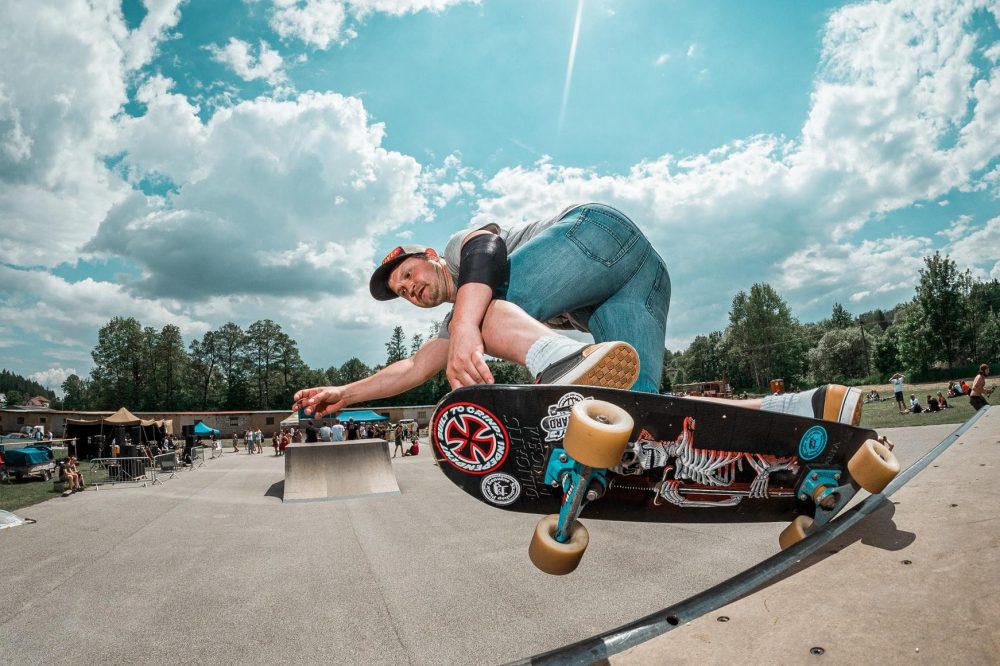
What Type of Skateboard You Skate – The skateboard you skate will impact your skate style for many reasons but most notably the skateboard size and shape depends on certain tricks and obstacles you prefer to skate. For example, if you see someone skating a fish shaped board without a big nose, they probably skate bowls and pools and don’t flip their boards much. You don’t even have to watch them skate, you can infer them from their skateboards.
What Type of Obstacles You Skate – While we touched on this above, when you figure out what obstacles a skater likes to skate, there’s certain terminology to address style. There’s Transition skaters who like to skate ramps, quarter pipes and skatepark bowls. Then there’s Vert skaters who skate big vert ramps like Tony Hawk and street skaters who like to flip their skateboards and grind down rails. There’s tech skaters who love ledges and manual pads and hessian skaters who paint their nails black and do bean plants. Pro Skaters will often say, “Wow, she flows so well on that ramp,” or “He’s so good at manual pads.” All of these ‘obstacles’ have their own styles the skater develops and (as you will see) even certain trick selections and fashion develop with them to compliment that style.
What Types of Tricks You Do – As we stated earlier, certain skate styles promote certain tricks and the more you skate you’ll find you’re more suited or prefer certain tricks. Maybe you’re really good at nollie stance tricks versus fake stance tricks. Or maybe you’re back foot dominant versus your front foot. Maybe you have a hard time doing a kickflip or a heel flip but are really good at frontside grinds.

Skate Fashion – We could write an entire article on skate fashion alone but what you need to know is skateboarders are a leader in the fashion world. From cargo pants to hoodies and dad hats, skate fashion is another palpable element in skate style. Street skaters from Philadelphia will dress in a different fashion than vert skaters from San Diego. It is how it is and it’s truly a beautiful thing. It speaks to the different skate crews and how location can influence your skate style.
Location – Location influences skate style for many reasons but arguably most importantly is because your local scene will draw from its own influences. This can be something like the local city spots or the culture of the local scene. People often say the East Coast has produced different styles of skaters, whereas the West Coast or Cities like London or Tokyo have produced a certain style recognizable from other parts of the world. It’s one of the best elements about skateboarding as they all meet to define the diversity that is the global skateboarding community.

Skating with Others Skaters – Skating with other skaters is going to impact your skating in many positive ways, one of those ways being how you hone your style. Just like anything done in groups, influence causes you to bind together. Maybe you all wear the same shoes or skate the same skateparks, or maybe you all fell in love with a certain skate brand. Ultimately, your skating on the board will influence each other’s styles from all these elements. However, skating with a skate instructor is quite a bit different. Skate instructors are trained to empower you to be your own influence. It’s one of our pride and joy at GOSKATE to help foster you or your loved one’s skate style.
What’s Trending in Skateboarding – Let’s be frank. Skateboarding is full of trends. Some that come and go and others that stick around and change skateboarding. There will certainly be trends that influence your style. In the 80s, skaters rode fish boards with risers on backyard quarter pipes. In the 90s skaters rocked 48mm wheels and 7.5″ boards and skate ledges and parking lots. Right now, it’s cargo pants and big jeans and cutty, quick footed clips. There’s also a resurgence in European skating and a bright renaissance happening in Japan. All of these trends contribute to the style ecosystem of the community and industry at large through media, branding, competitions and skaters in general.
How Long Does it Take a Beginner to Hone their Skate Style?

Congratulations! If you’re reading this article, you’ve taken the first steps in honing your skate style. But in all seriousness, you’re going to have to master the foundations of skateboarding and start to learn a few tricks.
Mastering the foundations of skateboarding is something GOSKATE instructors guarantee within the first 4 lessons. Learning how to stand, balance, pedal and ride a skateboard are the paramount first steps. From there, you’ll start to roll down ramps and obstacles that will challenge you to bend your knees, move your hips and shoulders, and all things that lay the foundation for your skate style.
After you’ve mastered the foundations of skateboarding and had a few lessons or sessions at the local skatepark, you’ll start to find your skate style by attempting tricks like the ollie, drop in, kick turn, and frontside kick turn. But it may be quite a long time before your style becomes developed to the point of recognition from others. At first you’ll want to get as comfortable as possible on a skateboard, as this is where the style stems from.
The more comfortable you are on your board, the more effortless your style will appear. It can take several months or several years to develop your style. The good news tho? Skaters spend their entire lives developing and finding their style because as you get older and better at skating, you’ll change what you skate and what tricks you do. It’s all a part of the fun.
8 Best Ways To Hone Your Skateboarding Style

8. It Starts With Your Pedal – You can’t go anywhere without a pedal. It’s where it all starts. We spoke earlier on how your style is your signature and there’s no better example of this than your pedal.
A pedal is also the perfect microcosm of understanding style in skateboarding if you think about it this way: it’s not even a trick technically but you can see everything from how skaters move their legs, shoulders, and torso to produce this powerful silhouette all skaters recognize. Most importantly, you want to have proper pedal form. This means not pushing mongo (taking your front foot off the board instead of pedaling with your back foot) and with deep strokes that accentuate power and finesse. Some amazing pedal skaters are Keenan Milton, Stevie Williams, Gino Iannucci and John Cardiel.
7. Watch Skate Videos – There’s really no better way to understand skateboarding than to watch skate videos. And while we certainly also mean YouTube videos, we’re talking full length feature skate videos from trusted skate brands. Skate videos have been around since the birth of skating and some of the best ever came out well before the 2000s.
From watching skate videos, you’ll gravitate to certain skaters and pick up on the details of cadence and trick selections or even obstacles you might like the look of. This is how skaters develop their favorite skaters, favorite companies and favorite teams. If you remember from above, these are all important aspects in the self discovery that is style.

6. Seek Out Older Skate Media – When watching skate videos you might be quick to hop on YouTube and watch contemporary media. However, some of the best skate videos in terms of style come from as early as the DogTown era. Skateboarding was born from surf style and has since evolved into something much gnarlier but style has been there every step of the way. So it’s a great way to see how style changes with trends and what aspects have remained appreciated by skateboarding at large.
There is something also just about older skate media that captures the style ethos of skateboarding. This includes photography and design as well. Large fish eye cameras, double exposures, long exposures all shot on film provide a certain texture to skate media an HD video on YouTube just can not. Take a look at skate media from every decade from 1960 to 2020. You will not be disappointed.
5. Open Your Mind to New Tricks – Opening your mind to new tricks is a great way to develop your style into new avenues. But what exactly do we mean by this? Well, let’s say you’ve arrived at a new skatepark with a perfect sized quarter pipe you might not have at your local skatepark. So instead of opting to skate more familiar obstacles, think of some tricks you might be able to do on the quarter pipe. Even if it’s just a rock to fakie, if it’s a trick you don’t normally do, you’ll be moving and adapting in new ways.
Maybe you’re really good at flatground or transition but haven’t developed rail skating. There’s always something you can work on and it takes a certain mindset to push yourself to new heights. Remember, your style follows your skill and comfort on the board. Develop those by trying to think of new tricks and watch your style grow with them.

4. Skate As Many Different Skateparks As Possible – Skateboarding as many different skateparks as possible will do a number of positive things to your skating – especially in terms of skill and confidence. That being said, skating different skateparks means you’ll be skating new obstacles, helping you conceive of new tricks and new challenges.
Whenever your body moves differently, you’re developing your skill and consequently your style. Let’s say you find a new launch ramp at a new skatepark that boosted your ollie higher than it ever has before. You leveled it out and discovered you can tweak your ollie and now when you return to your local park, you’re able to do them on flat ground. This is why it’s so important to have a skate crew or a skate instructor willing to hit new skateparks. GOSKATE and have some fun learning new tricks!

3. Experiment with Different Size Skateboard Decks – For some skateboarders this might mean going from a 7.5″ size skateboard to an 8.25″ skateboard. For others, this might mean going from a short board to a fishtail board or a mini cruiser to a longboard. It’s important to experiment with other decks since many times your first skateboard might be a gift or a hand-me-down.
Remember, skateboarding is all about having fun through self expression. You might not know what board you love skating on until you try it. Keep an open mind and don’t feel bad if you like your previous board. It’s all a part of the process and there is no wrong board to skate.
Not sure which skateboard size is right for you? We invite you to check out our Free Skateboard Size Calculator and our articles on how to select the right skateboard for your child.
2. Dedicate Time to Style Every Session – You probably dedicate a certain amount of time to learning shuvits or skating flatground. You probably practice getting your ollies higher also. So why not approach your style in the same way?
You can practice style with even just your pedal. Go watch some skate videos and take notes on how your favorite skater pedals or crouches. It’s your limbs and your joints, where you bend and turn. Pay close attention to the craft of these moves and do your best to stay on your board. Just skate around the neighborhood and stay on your board to develop movements you might feel intimidated to do at a skatepark.

1. Don’t Force it – We cannot express enough how developing your style should never feel forced. To be completely transparent here, skaters can tell when someone is trying to force style. It’s generally when a skater bends their knee after landing a trick but they do so when the impact has already happened and thus provides a glitch in the natural rhythm of that trick.
If you feel like your style is lacking even though you’ve addressed the above advice, it’s probably because you’re not skating consistently enough or skating the wrong size skateboard. It’s all about being comfortable on a skateboard and having fun so you wake up excited to skate. Don’t force it, instead find it. It can take time but usually the longer it takes, the better the style is. Go out in your neighborhood and cruise around. Hop off curbs and stay on your board the entire time. If you’re falling off you’re not really comfortable, which is the foundation for developing skate style.
[Bonus] Submit for Free Video Feedback on Your Style!
While we would love to book a skate lesson with every skater who needs help honing their style, we know not everyone has that luxury.
That is precisely why we created our Free Video Feedback tool for you to get the feed you need to not only develop your style, but learn skateboarding tricks.
We invite you to submit your video to our feedback page. From there you can let us know what you’re looking for in feedback and our team of lifelong skateboarders (and skate instructors) will answer you shortly with a palpable and skate changing answer.


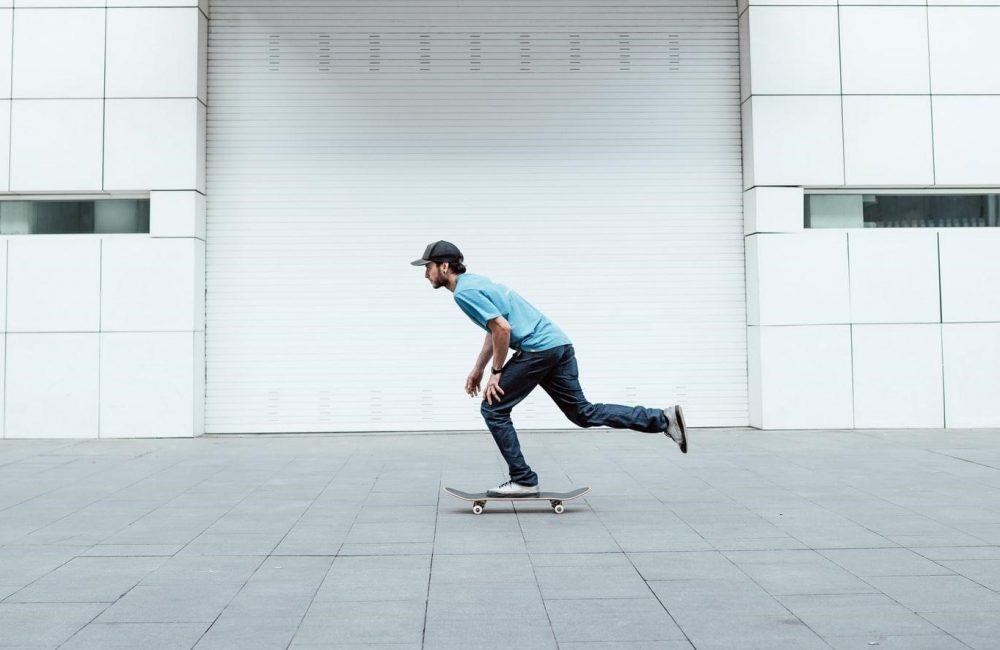


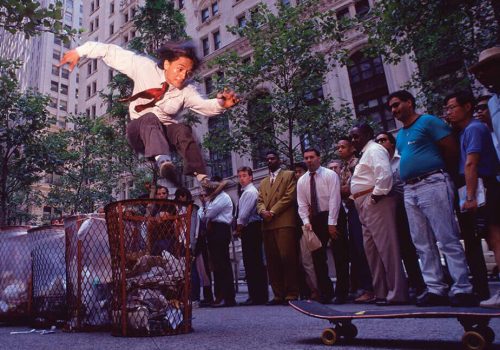

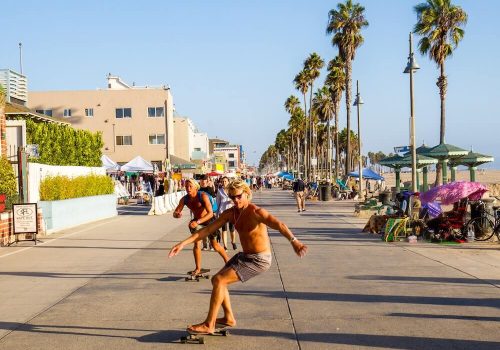
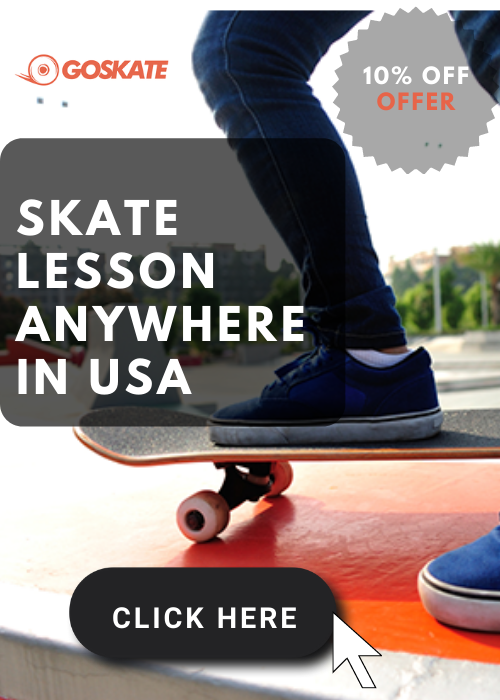


![Learn the Top 150 Skateboarding Terms in 10 Minutes [Updated 2024]](https://www.goskate.com/top/wp-content/uploads/2021/09/gf-80x80.jpg)
